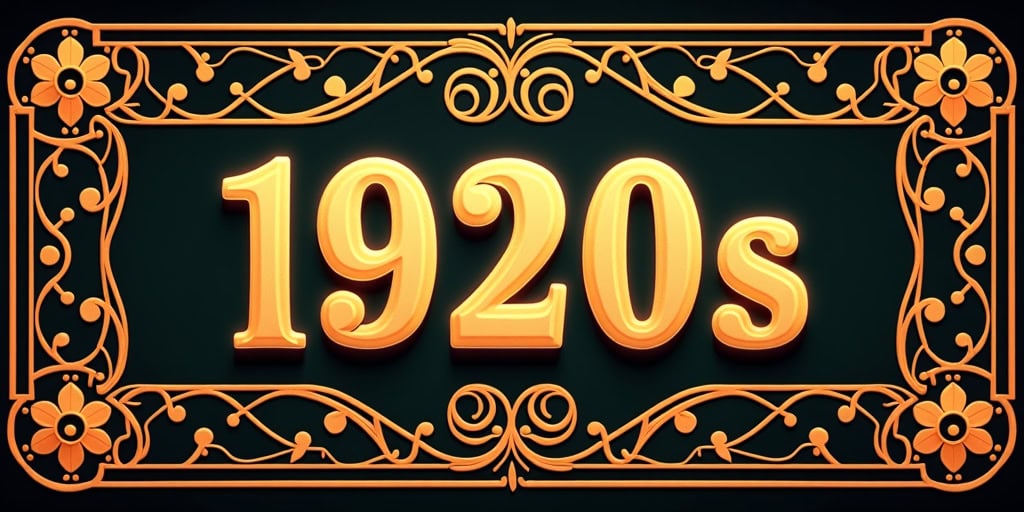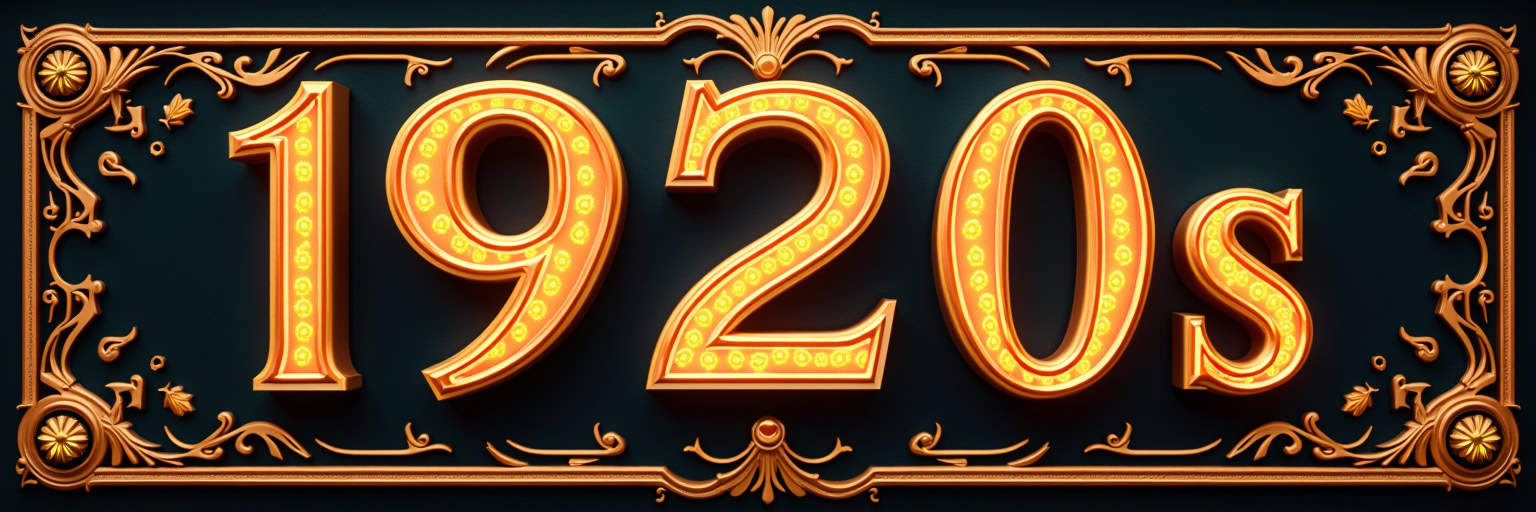The Decade That Roared: Unveiling the Vibrant Spirit of the 1920s
The 1920s – The Roaring Twenties
The 1920s roared to life with unprecedented economic prosperity and cultural dynamism in America. The decade kicked off with the ratification of the 19th Amendment, granting women the right to vote.
This victory for suffragists marked a turning point in gender roles and politics. Meanwhile, Prohibition went into effect, banning alcohol and giving rise to speakeasies and organized crime.
Technology continued its march forward. Radio became a household staple, bringing news and entertainment directly into homes. The first television was demonstrated in 1925, though it wouldn’t become widespread for decades.
Cars became more affordable and popular, changing American landscapes and lifestyles. In 1927, Charles Lindbergh made his historic solo flight across the Atlantic, captivating the world’s imagination.
Cultural revolution defined the era. The Jazz Age was in full swing, with Louis Armstrong and Duke Ellington rising to fame. Literature flourished with the works of F. Scott Fitzgerald and Ernest Hemingway.
The flapper emerged as a symbol of the new woman – bobbed hair, short skirts, and a carefree attitude. In Hollywood, “talkies” debuted with “The Jazz Singer” in 1927, transforming the film industry.
Fashion reflected the exuberant spirit of the times. Women embraced looser, more comfortable clothing. Hemlines rose, and waistlines dropped. Men’s fashion saw the rise of the suit as everyday wear.
Art Deco influenced everything from jewelry to architecture, with the Chrysler Building embodying the style’s sleek modernity.
The decade wasn’t all glitter and jazz. Racial tensions simmered with the resurgence of the Ku Klux Klan, and the Scopes “Monkey” Trial highlighted the clash between traditional and modern values.
As the 1920s drew to a close, few suspected that the booming stock market was about to crash, bringing the Roaring Twenties to an abrupt end and ushering in a new era of hardship.

1920s Events
- Prohibition (1920-1933): Nationwide ban on alcohol in the US, leading to speakeasies and bootlegging
- Women’s Suffrage: 19th Amendment ratified, granting women the right to vote in the US
- Scopes “Monkey” Trial (1925): Controversial case debating the teaching of evolution in schools
- Stock Market Crash (1929): Economic disaster leading to the Great Depression
- Lindbergh’s Transatlantic Flight (1927): First solo nonstop flight across the Atlantic Ocean
- Teapot Dome Scandal (1921-1922): A major political scandal involving oil reserves during Harding’s presidency
- Discovery of King Tut’s Tomb (1922): Howard Carter unearths the pharaoh’s ancient burial chamber
- First Winter Olympics (1924): Inaugural winter games held in Chamonix, France
- The signing of the Locarno Treaties (1925): Attempt to secure post-World War I peace in Europe
- The Jazz Age: Cultural phenomenon characterized by music, dance, and social change
- Harlem Renaissance: African American cultural, social, and artistic explosion centered in Harlem, New York
- The Lost Generation: A Group of American expatriate writers in Paris, including Hemingway and Fitzgerald
- Sacco and Vanzetti Trial (1920-1927): Controversial murder case highlighting anti-immigrant sentiment
- First Talkie Film (1927): “The Jazz Singer” marks the beginning of synchronized dialogue in movies
- Ku Klux Klan Revival: Resurgence of the white supremacist organization in the United States
- Red Scare (1919-1920): Period of strong anti-communist sentiment in the US
- Formation of the Soviet Union (1922): Creation of the world’s first socialist state
- Dawes Plan (1924): Attempt to solve Germany’s reparation problems after World War I
- Bonus Army March (1932): World War I veterans protest in Washington D.C. for early payment of bonuses
- Rise of Organized Crime: Emergence of powerful criminal organizations during Prohibition
1920s Inventions
- Traffic Signal: Three-color traffic light system invented by Garrett Morgan
- Band-Aid: Adhesive bandages created by Earle Dickson for Johnson & Johnson
- Electric Razor: Jacob Schick patents the first electric dry shaver
- Lie Detector: John Larson develops the polygraph machine
- Pop-Up Toaster: Charles Strite invents the automatic bread toaster
- Liquid Rocket: Robert Goddard launches the first liquid-fueled rocket
- Television: John Logie Baird demonstrates the first working television system
- Penicillin: Alexander Fleming discovers the antibiotic properties of penicillin
- Car Radio: The first commercially available car radios introduced
- Bubble Gum: Walter Diemer invents a less sticky, more bubbly chewing gum
- Frozen Food: Clarence Birdseye develops a quick-freezing method for food preservation
- Cotton Swab: Leo Gerstenzang invents Q-tips
- Radio Altimeter: Lloyd Espenschied patents a device to measure altitude using radio waves
- Sunglasses: Sam Foster mass-produces and sells the first sunglasses
- Hair Dryer: First handheld blow dryer invented by AEG
- Aerosol Spray Can: Erik Rotheim patents the aerosol spray can
- Tape Recorder: Fritz Pfleumer invents magnetic tape for sound recording
- Bulldozer: James Cummings and J. Earl McLeod designed the first bulldozer
- Instant Camera: Samuel Shlafrock patents a camera producing instant photographs
- Neon Lamp: Georges Claude introduces neon lighting for advertising
1920s Culture
- Flappers: Young women embracing new fashions and social behaviors
- Speakeasies: Illegal bars selling alcohol during Prohibition
- Charleston: Popular dance craze of the era
- Art Deco: Influential design style in architecture and visual arts
- Surrealism: Artistic movement exploring the subconscious mind
- The Great Gatsby: F. Scott Fitzgerald’s iconic novel capturing the Jazz Age
- Modernism: Literary and artistic movement rejecting traditional forms
- Silent Films: Popular entertainment before the advent of “talkies”
- Crossword Puzzles: Word games gain widespread popularity
- Radio Shows: Emergence of radio as a major form of home entertainment
- Bobbed Hair: Short hairstyle for women symbolizing independence
- Cubism: Avant-garde art movement led by Picasso and Braque
- Swing Dancing: Energetic partner dance developed from Lindy Hop
- Baseball’s Golden Age: Era of legendary players like Babe Ruth
- Dadaism: Artistic movement challenging traditional aesthetic values
- Cabaret: Popular form of entertainment featuring music, dance, and comedy
- Ouija Boards: Talking boards become a popular parlor game
- Expressionism: Artistic style emphasizing subjective emotions
- Jazz Clubs: Venues featuring live jazz music and dancing
- Vaudeville: Variety entertainment shows popular in theaters
1920s America
- New York City: Epicenter of the Jazz Age and Prohibition-era nightlife
- Chicago: Hub of organized crime and jazz music during Prohibition
- Los Angeles: Growing film industry and Hollywood’s rising influence
- Detroit: Booming automotive industry and mass production
- New Orleans: Birthplace of jazz and cultural melting pot
- Miami: Rapid development and real estate boom in South Florida
- Atlantic City: Popular seaside resort and center of illegal alcohol trade
- San Francisco: Cultural renaissance and artistic community growth
- Washington D.C.: Political center during post-war isolationism
- Boston: Intellectual hub and site of infamous Sacco and Vanzetti trial
- Philadelphia: Industrial powerhouse and cultural center
- St. Louis: Important transportation hub and blues music scene
- Kansas City: Thriving jazz scene and political machine of Tom Pendergast
- Cleveland: Industrial growth and cultural development
- Pittsburgh: Steel industry boom and labor movement stronghold
- Cincinnati: Brewing industry adapts to Prohibition
- Seattle: Aviation industry growth with Boeing’s expansion
- Denver: Oil discovery leads to economic boom
- Memphis: Emerging as a center for blues music
- Minneapolis: Flour milling capital and business innovation hub
1920s Fashion
- Cloche Hats: Close-fitting, bell-shaped hats for women
- Oxford Bags: Wide-legged trousers for men
- Costume Jewelry: Affordable, fashionable accessories
- T-strap Shoes: Popular footwear for dancing
- Raccoon Coats: Trendy fur coats worn by college students
- Flapper Dresses: Straight, loose dresses with a dropped waistline
- Plus Fours: Knee-length baggy trousers for men
- Headbands: Decorative bands worn across the forehead
- Mary Jane Shoes: Rounded-toe shoes with a single strap
- Fedora Hats: Soft felt hats with a creased crown
- Beaded Necklaces: Long strands of beads worn by women
- Knickerbockers: Baggy-kneed trousers fastened below the knee
- Bandeau Bras: Flattening undergarments for the boyish figure
- Wingtip Shoes: Decorative perforated leather shoes for men
- Fur Stoles: Fashionable fur accessories for women
- Bow Ties: Neckwear gaining popularity among men
- Cupid’s Bow Lipstick: Heart-shaped lip makeup style
- Rolled Stockings: Silk stockings rolled down below the knee
- Sportswear: Casual clothing for leisure activities
- Art Deco Jewelry: Geometric designs in jewelry and accessories
1920s Movies
- The Kid (1921): Charlie Chaplin’s heartwarming comedy-drama
- Nosferatu (1922): Influential German Expressionist vampire film
- Safety Last! (1923): Harold Lloyd’s famous clock-hanging scene
- The Thief of Bagdad (1924): Douglas Fairbanks’ lavish fantasy adventure
- The Gold Rush (1925): Charlie Chaplin’s classic Alaskan adventure comedy
- The General (1926): Buster Keaton’s Civil War comedy masterpiece
- Metropolis (1927): Fritz Lang’s groundbreaking science fiction epic
- Sunrise (1927): F.W. Murnau’s artistic silent drama
- The Passion of Joan of Arc (1928): Carl Theodor Dreyer’s powerful historical drama
- The Circus (1928): Charlie Chaplin’s comedy set in a circus
- The Jazz Singer (1927): First feature-length film with synchronized dialogue
- The Cabinet of Dr. Caligari (1920): Influential German Expressionist horror film
- The Phantom of the Opera (1925): Lon Chaney’s iconic horror adaptation
- Wings (1927): The first film to win the Academy Award for Best Picture
- Battleship Potemkin (1925): Sergei Eisenstein’s revolutionary Soviet film
- The Big Parade (1925): King Vidor’s influential World War I drama
- The Lodger (1927): Alfred Hitchcock’s first thriller
- The Man with a Movie Camera (1929): Dziga Vertov’s experimental documentary
- Pandora’s Box (1929): G.W. Pabst’s provocative drama starring Louise Brooks
- Un Chien Andalou (1929): Surrealist short film by Luis Buñuel and Salvador Dalí
1920s Music
- Jazz: Improvisation-based music originating in New Orleans
- Blues: African American folk music gaining wider popularity
- Ragtime: Syncopated piano music influencing early jazz
- Tin Pan Alley: Popular song publishing industry in New York
- Big Band: Large jazz ensembles playing swing music
- Charleston: Uptempo jazz dance music
- Bessie Smith: “Empress of the Blues” and influential recording artist
- Louis Armstrong: Innovative jazz trumpeter and vocalist
- George Gershwin: Composer bridging classical and popular music
- Duke Ellington: Pioneering jazz composer and bandleader
- Paul Whiteman: Popular bandleader known as the “King of Jazz”
- Jelly Roll Morton: Early jazz pianist and composer
- King Oliver: Cornet player and bandleader, mentor to Louis Armstrong
- The Original Dixieland Jazz Band: First jazz group to record commercially
- Fats Waller: Jazz pianist, composer, and entertainer
- Ma Rainey: Influential early blues singer
- Sidney Bechet: Pioneering jazz saxophonist and clarinetist
- Bix Beiderbecke: Innovative jazz cornetist and composer
- Ethel Waters: Blues, jazz, and gospel singer
- Fletcher Henderson: Bandleader and arranger, influential in developing big band jazz
1920s Cars
- Ford Model T: Affordable, mass-produced automobile
- Bentley 3 Litre: A luxury sports car with a racing pedigree
- Bugatti Type 35: Successful Grand Prix racing car
- Chrysler Model B-70: The first car produced under the Chrysler name
- Rolls-Royce Phantom I: Luxurious, handcrafted automobile
- Duesenberg Model J: Powerful, high-end American luxury car
- Austin 7: Small, affordable car popular in Britain and internationally
- Chevrolet Superior: Competitor to the Ford Model T
- Lancia Lambda: Innovative car with unibody construction
- Hispano-Suiza H6: Luxury car with advanced engineering
- Stutz Bearcat: an American sports car with a reputation for speed
- Citroën Type A: First mass-produced car in Europe
- Cadillac Type 61: Luxury car introducing the synchromesh transmission
- Mercedes 24/100/140 PS: Supercharged luxury car
- Packard Twin Six: Prestigious American luxury automobile
- Alfa Romeo 6C: Sports car with racing success
- Lincoln Model L: Luxury car acquired by Ford Motor Company
- Vauxhall 30-98: British sporting car with high performance
- Marmon Model 34: Innovative American car with aluminum body parts
- Pierce-Arrow Model 36: Luxury car is known for its headlight design
